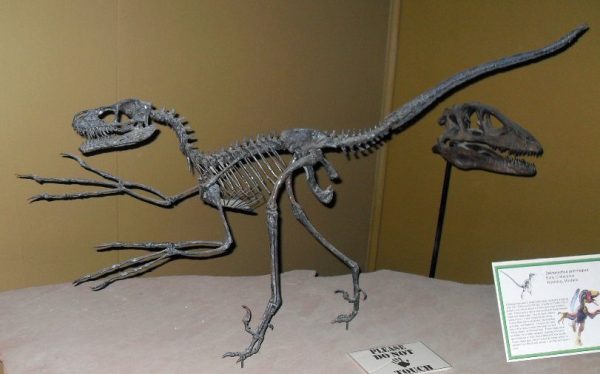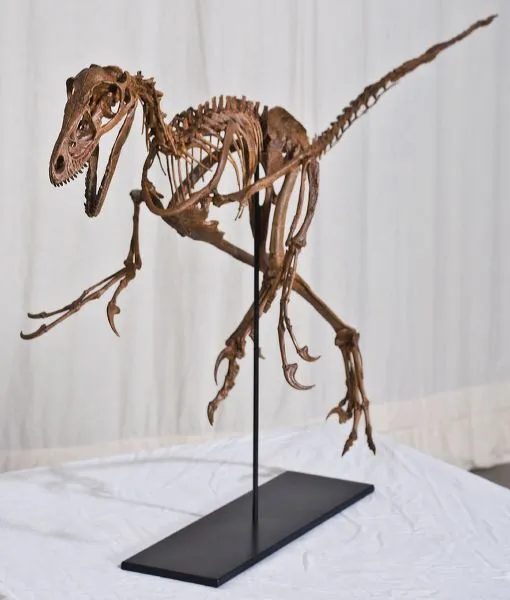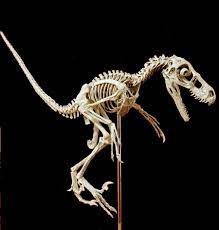In the ever-expanding world of paleontology, it’s not always the colossal dinosaurs that steal the spotlight. Sometimes, it’s the smaller, more unassuming creatures that offer fascinating insights into prehistoric life.

One such diminutive marvel is the Bambiraptor, a tiny yet remarkable predatory dinosaur that once roamed the ancient landscapes. In this article, we delve into the discovery of the Bambiraptor fossil and its significance in shedding light on small-sized predators from the dinosaur era.
While the colossal size of dinosaurs like the Tyrannosaurus rex or the Brachiosaurus often dominates our imagination, the Bambiraptor introduces us to a different aspect of prehistoric life.
Named after the beloved Disney character “Bambi” due to its presumed gracefulness, the Bambiraptor was a small, bird-like dinosaur that measured only about three feet in length.

One of the most striking features of the Bambiraptor is its incredibly preserved fossilized remains, which have provided paleontologists with a wealth of information about this tiny predator. Unearthed in the state of Montana, USA, this discovery opened a window into the Cretaceous period, approximately 75 million years ago.
The Bambiraptor’s fossilized remains are of exceptional quality, revealing fascinating details about its appearance. One of the most intriguing revelations is the presence of feathers. This discovery further solidified the understanding that many small theropod dinosaurs were likely feathered, a feature that allowed them to regulate body temperature and potentially aided in activities like hunting and nesting.

The presence of feathers on the Bambiraptor is not only a testament to its close evolutionary relationship with modern birds but also a reminder that these seemingly small and insignificant dinosaurs played crucial roles in the ancient ecosystems.
Despite its diminutive size, the Bambiraptor was no less equipped as a predator. Its sharp teeth, powerful jaws, and keen eyesight suggest that it was a formidable hunter. Its lightweight build and agility likely made it an efficient predator, capable of pursuing small prey and navigating the challenging terrain of its time.

The discovery of the Bambiraptor underscores the incredible diversity of predatory dinosaurs during the Mesozoic era. While we often think of towering theropods, the Bambiraptor and its kin serve as a reminder that dinosaurs came in various sizes and shapes, each uniquely adapted to its ecological niche.
The Bambiraptor’s discovery not only sheds light on the life of these small-sized predators but also provides valuable insights into the ecosystems of the Cretaceous period.

Understanding the role of creatures like the Bambiraptor in the food chain, their interactions with other species, and their behaviors can help reconstruct the ancient environments they inhabited.
This remarkable fossil serves as a reminder that paleontology is an ongoing journey of discovery, with each find contributing to our understanding of Earth’s ancient past.

The Bambiraptor, a small yet significant piece of the prehistoric puzzle, continues to capture the imagination of scientists and enthusiasts alike, emphasizing that in the world of dinosaurs, even the smallest among them have fascinating stories to tell.





